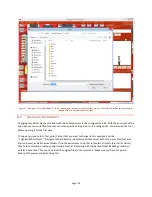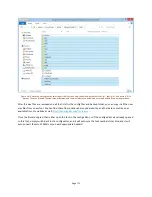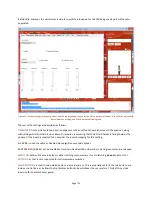
Page | 9
9.
Color Pads
C1-, C2-, C3-, C4-
Hook the main LED cathodes to these pads. C4- may also be
used for an accessory such as a rumble motor.
10.
Switch Pads
MAIN, AUX
Pads for the switches. MAIN can be a momentary or latching,
AUX must be momentary. Make sure to select the correct type
of switch for MAIN in the Config Editor.
11.
Clash Pads
CS+, CS-
Not necessary in Igniter 3™, though hooking a clash sensor
here will aid in detecting clashes.
12.
S Pads
S1, S2
Used for connecting the XBee module or BT module
13.
Comm Pads
DA, CL
Reserved for future use.
Figure 2 – Description of each component.
2.3.
TRUDRIVE™ SEPARATION
Igniter 3™ will come by default with the TruDrive™ attached to the main board. If it is desired to have the
TruDrive™ separate from the main board for the install, then you can detach the two boards.
Separation is much easier than with previous board versions and can be performed by hand or with a small set of
needle nose pliers or forceps. Make sure to keep pressure off the middle of the board; hold it in your hands by the
two edges.
It is important to note that once the board has been removed it cannot go back on; plan accordingly before
separating the boards.
3.
WIRING DIAGRAMS
The following diagrams are the most common to get your board up and running.
Note: It is very important that the correct resistor be used between the negative pad of the LED and C1-, C2-, C3-
and C4- to prevent burning out the LED for warm color LEDs. For Rebel LEDs if a red, red-orange or amber LED is
used, then a 1ohm 1watt resister is needed. For any other Rebel colors a resistor is not needed. The STTH2L06
diode can be used in place of the resistor and it is a slightly smaller part.
3.1.
BASIC WIRING
This is the most basic wiring that is possible to get the board up and running. It is great for testing your Igniter 3™
on the bench, or if you are doing a simple install into a saber that will have a removable battery. However, to
experience the full features of Igniter 3™ it is highly recommended to use an RGB LED, as shown in the diagrams
below.










































